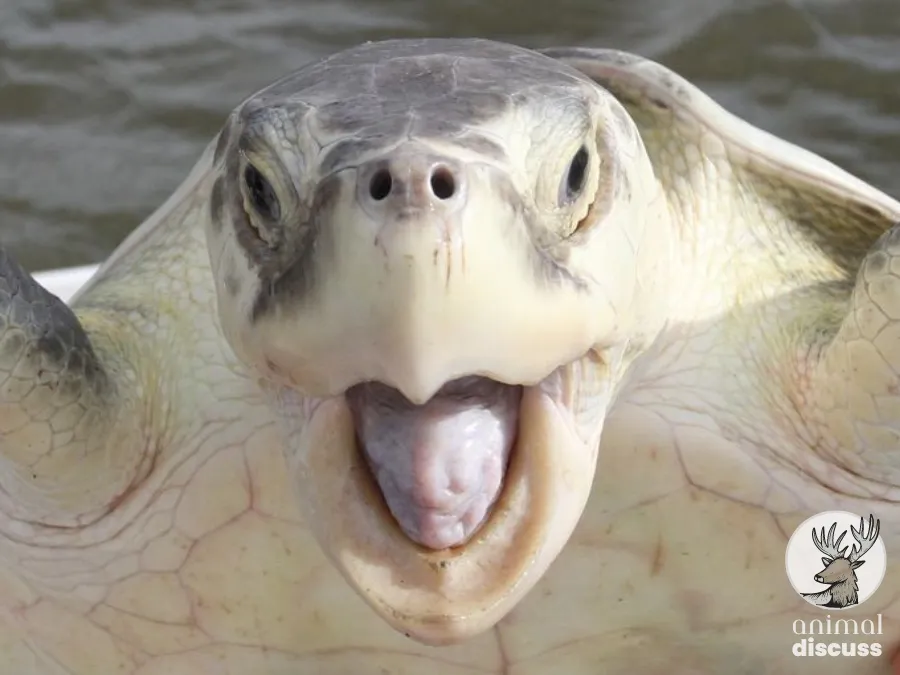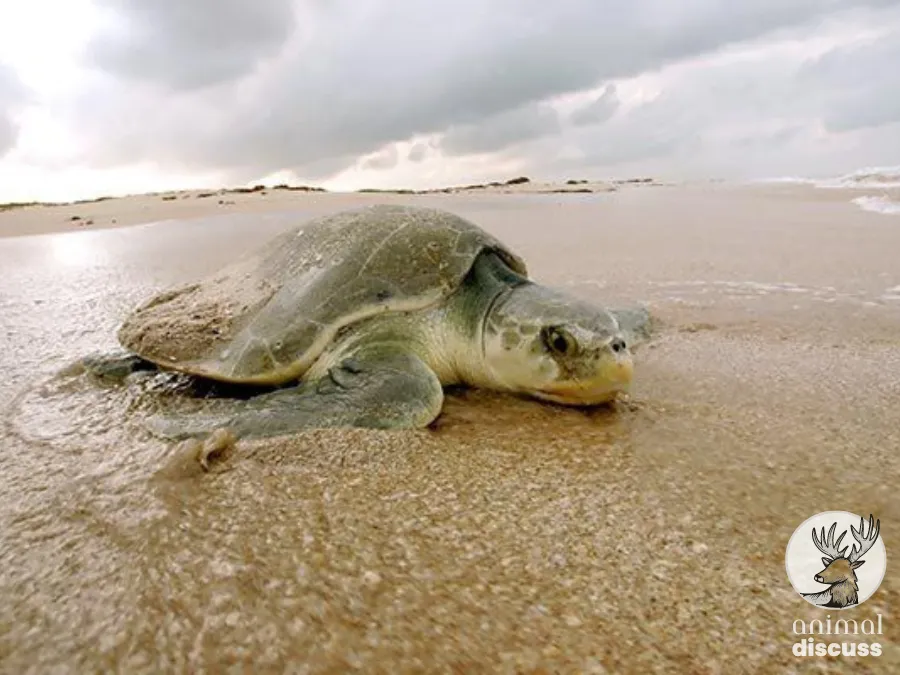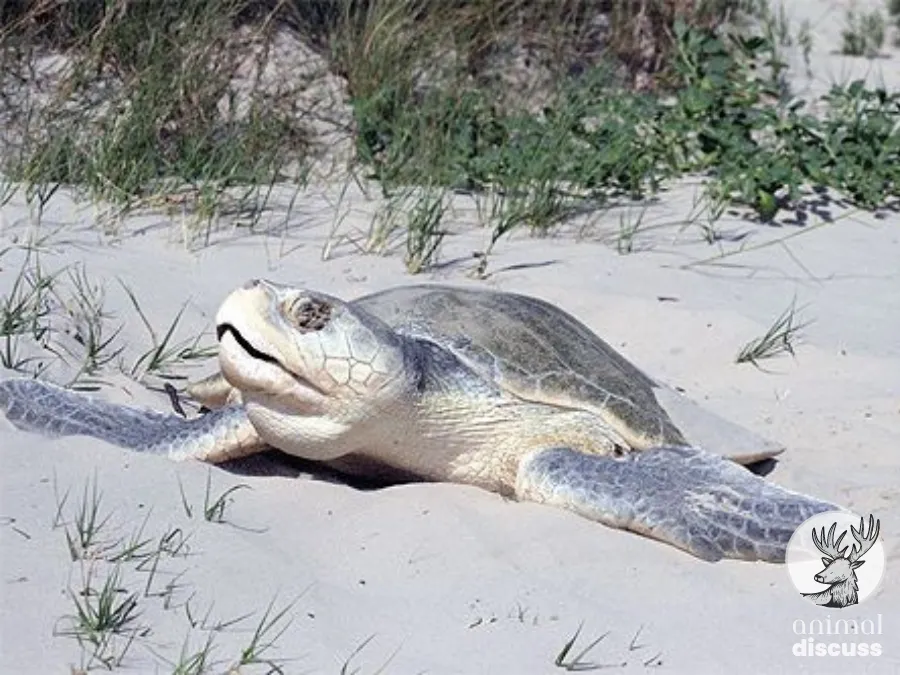Have you ever thought about what Kemp’s Ridley Sea Turtles feast on the ocean? Kemp’s Ridley Sea Turtles, who, as omnivores, consume a variety of food they can find in the ocean ecosystem.
So, these omnivorous Kemp’s Ridley Sea Turtles eat mainly crabs, fishes, mollusks, squids, etc. Their diet plays a key role in keeping the ecological balance of their habitat in the plant ocean.
In this article, I have mentioned both adults’ and hatchings’ food preferences, consumed nutrients, and digestion systems. I have also discussed the factors that impact their feeding habits. Let’s learn their daily dietary habits that help discover the mysteries of turtles.
What Do Kemp’s Ridley Sea Turtles Eat? [Reference 1] [Reference 2]
As I said, Kemp’s Ridley Sea Turtles are omnivores, eating both animals and plants. Mainly they feed on crustaceans including blue crabs and fiddler crabs.

However, they also eat fish, shrimp, clams, mussels, squids, sea urchins, and jellyfish as their staple foods. They intake whatever prey organisms they find in both marine and coastal environments.
Thus, such a varied diet ensures the Kemp’s Ridley Sea Turtles get all the nutrients. Here’s a quick overview of their dietary chart –
| Food | Description |
|---|---|
| Crabs | Blue and fiddler crabs |
| Fish | Herring, Mullet, and small fish |
| Mollusks | Clams, mussels, etc. |
| Squids | Market and arrow squids |
| Jellyfish | Soft-bodied |
| Shrimps | Small crustaceans |
| Sea urchins | Green and purple sea urchins |
What Do Baby Kemp’s Ridley Sea Turtles Eat?
Now, what do you think about baby Ridley’s food menu? Juvenile Kemp’s Ridley Sea Turtles, more commonly referred to as hatchlings, mainly feed on small marine organisms.
They consume it from their beach and oceanic homes. At the beginning of their lives, the hatchlings mostly consume the zooplankton and small fish larvae.
However, they get the necessary nutrients and energy required during their early life stages by having smaller planktonic organisms. As these babies progress in their development, they begin to eat a diet that resembles that of adults.
Curious to know more about Kemp’s Ridley Sea Turtle? Read this article
What Is the Necessary Nutrition Kemp’s Ridleys Get While Consuming Food?
Kemp’s Ridleys’ food mostly includes crabs along with other soft-bodied invertebrates like jellyfish, salps, siphonophores, and pyrosomes.

These foods are rich in nutrients, like proteins, fats, carbohydrates, vitamins, and minerals. It helps the turtles to develop, have energy, and generally be healthy.
Besides, Kemp’s Ridley turtles take in fish, mollusks, and other sea animals which are very good sources of proteins. Through this diverse diet, Kemp’s Ridley Sea Turtle acquires all necessary nutrients for metabolism, immune function, and reproductive health throughout their life cycle.
How Do Kemp’s Ridleys Digest Food?
Shortly after their consumption, the consumed food goes through the esophagus into the stomach. Then, the mechanical and chemical digestion of their food starts.
The stomach has a strong acid (hydrochloric acid and an enzyme(pepsin) that breaks down food into smaller molecules.
After that, their partly digested food passes to the intestines. Here more digestion and absorption of nutrients occur.
The last step is the removal of waste products. This is done through the cloaca. Thus, their digestive process makes sure that they get all the nutrition they need.
What Factors Influence Kemp’s Ridleys’ Eating Habits?
Environmental factors, growth stage, resource competition, and safety from predators shape the foraging behavior of Kemp’s Ridley Sea turtles. Let’s learn more about them –
Environmental factors
Oceanic parameters like water temperature, ocean currencies, and water clarity have a great impact on Kemp’s Ridley Sea turtles’ foraging choices. Studies have revealed that they are more likely to feed in warm waters.
In addition, marine currents provide the grounds for the export of nutrients and plankton to other areas. For example, the upwelling zones can give rise to an increase in the phytoplankton population.
This creates a better environment for the jellyfish and other prey species that are consumed by Kemp’s Ridleys.

Another factor that would affect the precise foraging behavior in Kemp’s Ridley Sea Turtles is seawater clarity. Water with limited turbidity is easily observed and even turtles can effectively locate and catch prey.
However, turbid or muddy water can be sometimes a hindrance to prey detection and feeding because of low visibility.
Growth Stage
Research proves that the diet habits of these sea turtles may be modified after their physical development and maturity.
A hatchling’s diet may consist of more soft-bodied invertebrates like jellyfish, whereas adults usually eat crustaceans like crab. Such a dietary change is probably the result of their jaws’ structure modifications and their feeding capabilities.
Resource competition
Although Kemp’s Ridley Sea Turtles are solitary eaters, they might compete with loggerhead turtles and green turtles. In coastal and ocean waters, Kemp’s Ridley turtles compete for crabs and jellyfish.
Such competition might even lead to differences in the distributions and abundances of different prey species. Thus, it affects the feeding behavior of the turtles.
Risk of predation
The risk of predation can also affect the choice of foraging habits and feeding patterns. Studies revealed that turtles noticeably reduced their presence in areas with high predation rates.
For instance, in shark or fish zones, they do not roam for food. They might also feed at night or in the deeper depths of the ocean to avoid being preyed upon while searching for food.
Frequently Asked Questions
Here are a few more additional questions you might be asking now regarding their food habits.
1. How much can Kemp’s Ridley Sea turtles eat?
Kemp’s Ridley Sea Turtles feed differently due to attributes like age, size, and metabolic rate. On average, adult turtles eat about 1%-2% of their body weight per day.
2. Do Kemp’s Ridleys eat all day?
No. Kemp’s Ridley Sea Turtles do not always eat, as their digestive systems work at different intervals. Mostly, these turtles have opportunistic feeding habits. They can feed at any time of the day or night. However, their feeding activity depends on prey availability, environmental conditions, and their energy needs.
Conclusion
In conclusion, the diet of Kemp’s Ridley Sea Turtles is an omnivore that feeds on crabs, fish, mollusks, and other marine fauna. By taking these foods, they get all the necessary nutrients they require to survive.
Kemp’s Ridley Sea Turtles maintain ecological balance by consuming the abundant resources of the oceans. However, environmental conditions, different growth stages, resource competition, and the threat of predation can all influence their choice of diet.

